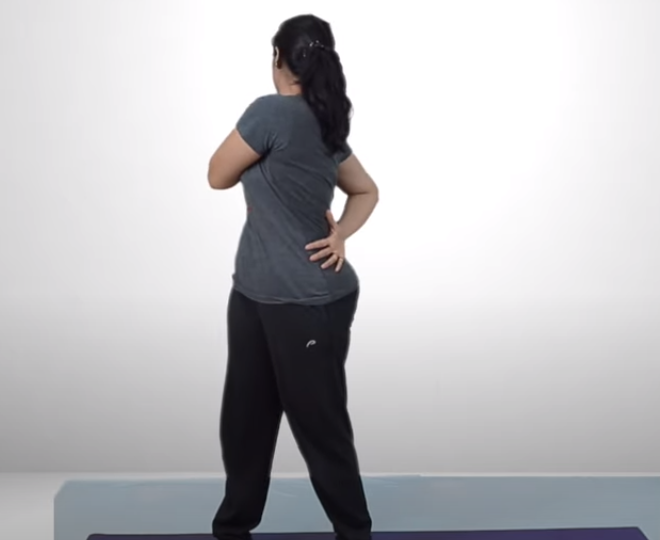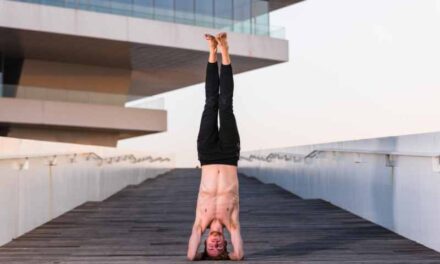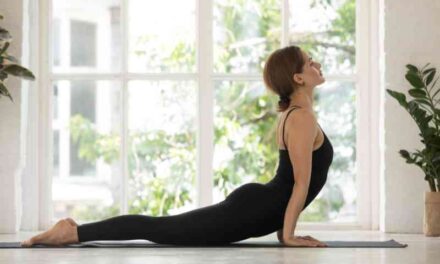One of the Hatha yoga poses that many people find challenging yet rewarding is Katichakrasana, also known as the waist rotation pose. This asana involves twisting the torso and engaging the core muscles, providing a range of physical and mental benefits.
In this blog post, we will explore the Katichakrasana pose in detail, including its benefits, how to perform it correctly, and precautions to keep in mind.
Benefits of Katichakrasana
Katichakrasana offers a range of physical and mental benefits, making it a popular pose among yoga practitioners. Here are some of the benefits of this pose:
- Improves spinal flexibility: This pose involves twisting the torso, which helps to stretch and lengthen the spine. Regular practice can lead to improved spinal flexibility and range of motion.
- Tones the abdominal muscles: The twisting motion of Katichakrasana engages the core muscles, including the obliques and rectus abdominis, which can help to tone and strengthen the abdominal muscles.
- Stimulates digestion: Twisting the torso can help to stimulate the digestive system, improving digestion and reducing digestive issues such as bloating and constipation.
- Reduces back pain: By stretching and strengthening the muscles of the back and abdomen, Katichakrasana can help to reduce back pain and discomfort.
- Relieves stress and anxiety: Practicing this pose can help to calm the mind and relieve stress and anxiety. It is also believed to stimulate the Manipura chakra, or the solar plexus chakra, which is associated with feelings of confidence and self-esteem.
How to perform Katichakrasana
Before attempting this pose, it is important to warm up the body with some gentle stretches and movements. You should also avoid this pose if you have any injuries or medical conditions that may be aggravated by twisting the torso.
Here’s how to perform Katichakrasana:
- Stand with your feet hip-width apart, with your arms at your sides.
- Inhale deeply and raise your arms out to the sides, parallel to the floor, with your palms facing down.
- Exhale and twist your torso to the right, bringing your left hand to your right shoulder and your right hand to your left hip.
- Hold the pose for a few breaths, twisting your torso as far to the right as you comfortably can.
- Inhale and return to the starting position with your arms outstretched.
- Exhale and repeat the twist to the left, bringing your right hand to your left shoulder and your left hand to your right hip.
- Hold the pose for a few breaths, twisting your torso as far to the left as you comfortably can.
- Inhale and return to the starting position with your arms outstretched.
Repeat this sequence several times, alternating sides with each twist.
Precautions to keep in mind
As with any yoga pose, it is important to practice Katichakrasana with caution and respect for your body. Here are some precautions to keep in mind:
- Avoid this pose if you have any injuries or medical conditions that may be aggravated by twisting the torso.
- Listen to your body and only twist as far as feels comfortable. Do not force the pose.
- Keep your feet firmly planted on the ground throughout the pose to maintain stability and balance.
- Keep your shoulders relaxed and your gaze forward, avoiding any strain on the neck.
- If you feel any discomfort or pain in the lower back, modify the pose by keeping your knees slightly bent.
- Avoid this pose if you are pregnant, or modify the pose by keeping your feet wider apart and twisting less deeply.
Conclusion
Katichakrasana, or the waist rotation pose, is a challenging yet rewarding Hatha yoga pose that offers a range of physical and mental benefits. By twisting the torso and engaging the core muscles, this pose can improve spinal flexibility, tone the abdominal muscles, stimulate digestion, reduce back pain, and relieve stress and anxiety. However, it is important to practice this pose with caution and respect for your body, listening to any discomfort or pain and modifying the pose as needed. With regular practice and proper form, Katichakrasana can be a valuable addition to your yoga practice.





